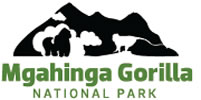Planning to do a gorilla safari in Uganda? I believe you’ve got a lot of questions pondering in your head, about what to do and what not to do during this thrilling gorilla tour.
Only about 1000 gorillas are recorded to be dwelling within the Virunga region of Africa and this calls for strict rules and regulations to prevent their extinction. As a result, there are many dos and don’ts that trekkers need to know, mostly these are given to visitors during briefing sessions before the tracking.
These are not restrictions as one may think, but rather a set of regulations put in place to ensure not only the safety of mountain gorillas but also travelers in the jungle.
Gorilla trekking has for decades been a leading tourism activity drawing millions of travelers from all over the world to come and enjoy the thrill of being with the world’s endangered species. This fact has put the lives of mountain gorillas at a risk, in terms of mass gorilla tourism, hence the need to institute strict regulations by the Ugandan government in order to reduce the negative effects which might arise.
These gorilla trekking rules and regulations apply in both gorilla destinations, Bwindi impenetrable and Mgahinga gorilla national parks and these include among others:-
Maximum of 8 persons allowed to trek a gorilla group per day.
Each gorilla family is strictly allocated 8 persons or less. These 8 members are selected during the briefing, then assigned to a specific gorilla family, usually depending on the age, physical fitness, and distance involved to trek the group.
This implies that there are 8 permits only per day per gorilla family; however, during low seasons, a gorilla family can be tracked by less than 8 persons or even none at all.
Limitations in the number of trekkers are primarily to avoid/reduce potential harm due to congestion and may pose danger to the lives of endangered gorillas.
Maintain a 7-meter distance.
Travelers on a Uganda gorilla tour are advised to maintain a distance of at least 7 meters from the mountain gorillas.
The distance was instated by the Uganda wildlife Authority to avoid closer contact with the endangered gorillas but still enable travelers to have a perfect view of the gorillas. Further distance from the gorillas is a way to prevent travelers from the likelihood of spreading air-borne diseases like cough, flu, cold which can be contracted by the gorillas. And as well travelers can contract diseases spread by the mountain gorillas.
General health rules.
Gorillas are prone to human illnesses due to the fact that they share almost 98% of their DNA with human beings. The following health precautions should be put into consideration;
Should you suffer from any contagious illness, such as cold, cough, etc. before gorilla trekking tour,
In case of an illness with a contagious disease like cold or fever, endeavor to stay behind and your money will be refunded or an alternative to can be organized for you.
Respect the limit number of visitors imposed by authorities per day as this reduces the chances of disease outspread, hence ensuring sustainable gorilla tourism.
In cases where you need to cough or sneeze while in the presence of mountains gorillas, you are advised to turn away your face from the direction of gorillas and cover your nose and mouth to avoid spreading bacteria to the gorillas.
When you need to use an “African bush toilet”, as for advice from the ranger guides. They will dig for you a small hole which you’ll re-fill afterward.
Stay calm and keep in your groups.
Desist from splitting and moving alone in the jungle. This increases the chances of exposure to potential dangers and harm, like getting lost in the forest or being attacked by wild animals.
Trekkers are also advised to talk in a low tone, mountain gorillas are very sensible and calm primates but which may charge when disrupted by human noise. In case a gorillas charges, travelers are required to imitate by crouching down and t not to run away and avoid looking directly into the gorillas’ eyes.
Do not feed gorillas nor litter.
Packing is a must for all travelers engaging in the gorilla trekking experience. While visitors are advised to carry packed lunch, drinking water, and snacks, they ought not to litter or leave anything behind at the end of the trek. These may include empty bottles, polythene bags, and leftovers. Travelers must equally not feed mountain gorillas in any way.
A gorilla trek is restricted to only one hour.
Trekkers are advised to maximize the only one hour of interaction with mountain gorillas. However, you can spend up to 8 hours looking for these giant apes.
On meeting the gorillas, travelers must spend an hour as they observe carefully their human-like behaviors as well as taking photographs. After one hour of trekking, travelers are required to trek back to the starting point marking the end of the gorilla tour.
15 years and above.
Gorilla trekking age is restricted to a minimum of 15 years, regardless of physical fitness. Therefore all gorilla trekkers must be 15 years and above and this must be clearly reflected in the documents such as passport, birth certificate, or a national I.D.

